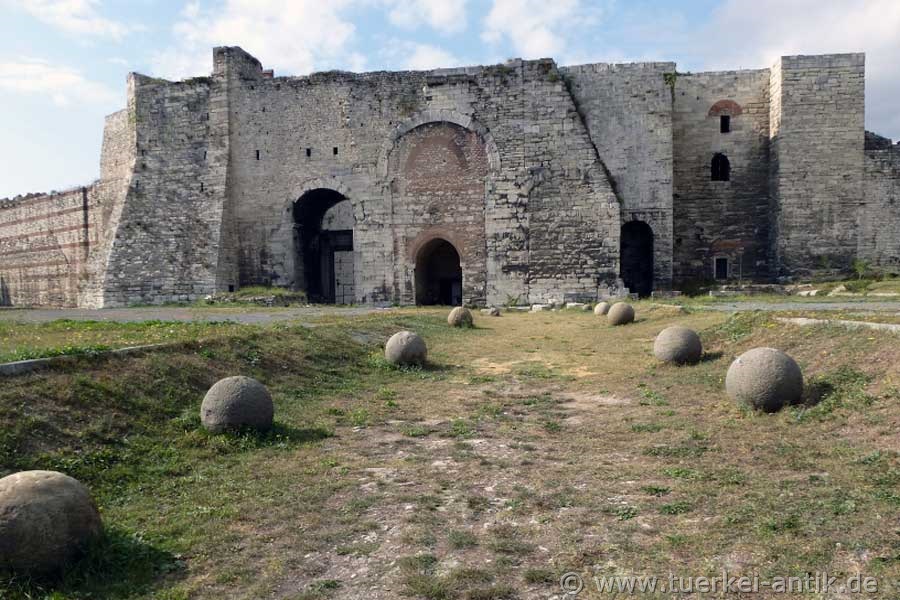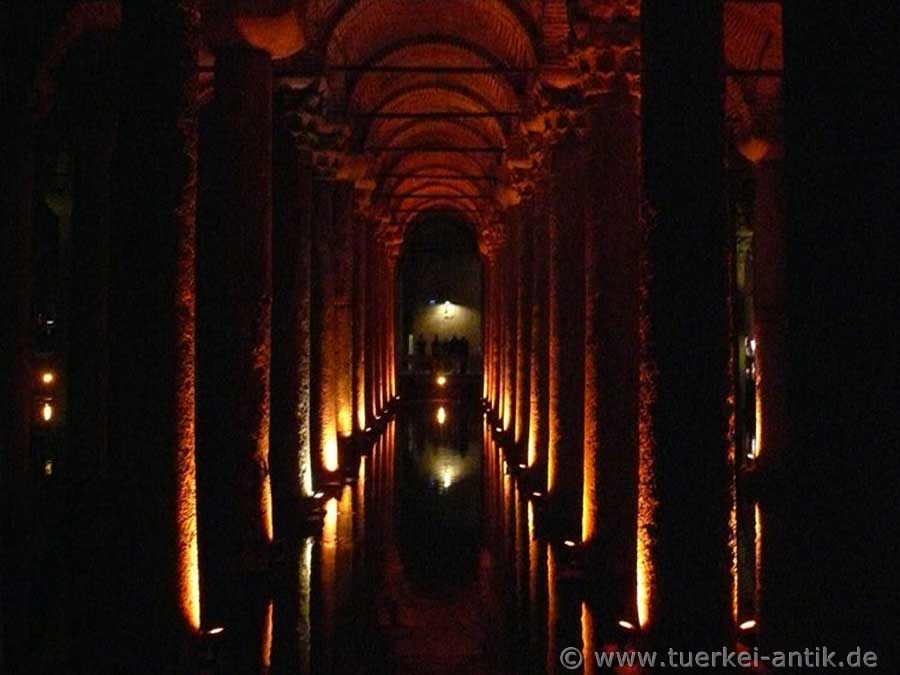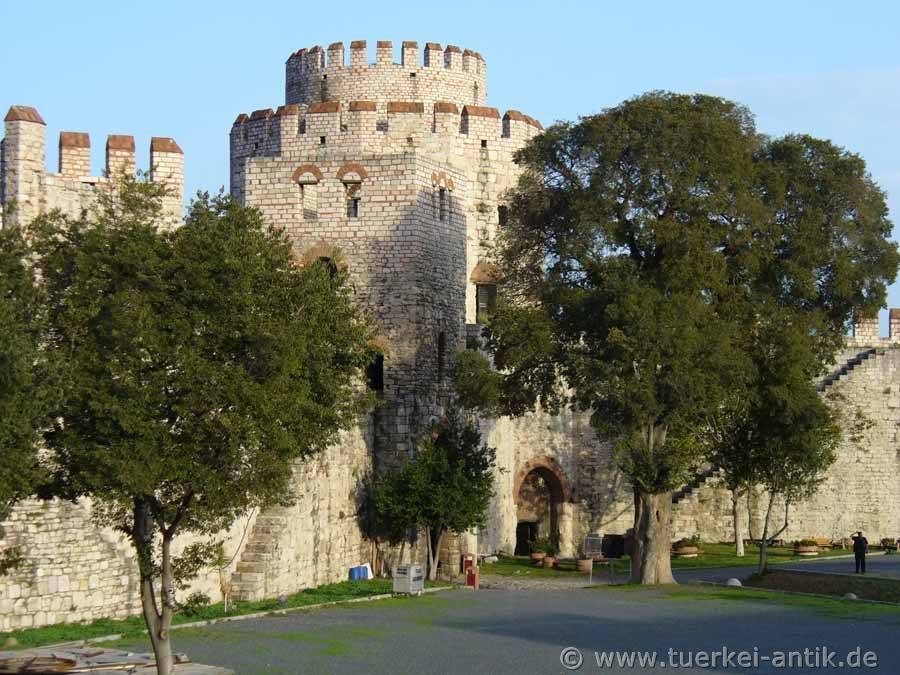 |
| Constantinople in Thrace | |||
|
|
|
||
| The Valens Aqueduct | |||
|
For over 2000 years this city has been a melting pot of different cultures. Byzantium, Constantinople and today Istanbul, these are the names this city bore. It was founded by Greeks in 658 BC. In 324 AD, the founding year of the Byzantine Empire, Constantine the Great made the city "the new Rome".
|
|||
|
|
|||
| The Hagia Sophia | |||
|
The Hagia Sophia (Turkish Aya Sofya), Church of Holy Wisdom, is probably the most famous building in the city. The first church was built under Constantine, but burned down in 404 AD. The second building was completed 7 years later, but was completely destroyed during an uprising in 532 AD.
|
|||
|
|
|||
| Yerebatan Sarayı | |||
|
The Yerebatan Cistern (Yerebatan Sarayı) next to the Hagia Sophia was built under Emperor Justinian. He had the cistern built between 532 and about 542 as a water reservoir for the Great Palace. Above it was a large basilica, therefore the cistern is also called cisterna basilica. It has a capacity of approx. 80,000 cubic metres. Twelve rows of 28, a total of 336 columns, each eight meters high, with mainly Corinthian capitals support the vault. The water, which came in best quality from the Belgrade Forest in the highlands west of Istanbul over the viaducts of Hadrian and the Valens, served to supply the imperial household.
|
|||
|
|
|||
| Restored section of the Theodosian Walls | |||
|
|
|||
|
Die Theodosianische Mauer ist eine Anfang des 5. Jahrhunderts unter Kaiser Theodosius II. und dem Präfekten Anthemius errichtete, etwa 19–20 Kilometer lange Befestigungsanlage (Land- und Seemauern) zum Schutz von Konstantinopel Die Theodosianische Mauer wird von einigen Historikern als eine der erfolgreichsten und bestdurchdachten Befestigungsanlagen in der Geschichte der Kriegstechnik angesehen. Viele der einschneidendsten Ereignisse in der Geschichte der Stadt stehen eng mit diesem außergewöhnlichen Bauwerk in Zusammenhang. Der Bau des Wallsystems wurde notwendig, um der Bedrohung durch die Hunnen zu begegnen und der rasch expandierenden Stadt zusätzlichen Raum zu verschaffen. Trotz zunehmenden Verfalles und dem Aufkommen der Feuerwaffen waren die Befestigungen bei entschlossener Verteidigung auch noch in der Mitte des 15. Jahrhunderts nur schwer zu überwinden. Die Komplexität der Verteidigungsanlagen trug wesentlich zum langen Bestehen des Byzantinischen Reiches bei. |
|||
|
|
|||
|
|
|||
|
Unrestored section of the Theodosian Walls |
|||
|
On 29 May 1453, the land wall was stormed by the army of Sultan Mehmed II, which was superior in terms of numbers and weaponry. The siege of Constantinople was arduous and lasted seven weeks, although the city was already largely depopulated and completely impoverished. For almost 1000 years the fortifications had been a reliable protection for the city and its citizens. When his capital Constantinople also fell to the Ottomans, the end of the Byzantine Empire was sealed. After that, most of the fortifications were left to decay, and the inhabitants used them as a quarry for a long time. In the last decades of the 20th century, however, work began on restoring and preserving some of them. |
|||
|
|
|||
|
|
|||
|
Yedikule Fortress |
|||
|
|
|||
|
Yedikule, the "Castle of the Seven Towers", is located directly on the Theodosian Wall. It is part of a 20 km long fortification built at the beginning of the 5th century under Emperor Theodosius II. The plant is located directly on the wall. It is partly of Byzantine and partly Ottoman origin. Their towers are connected by thick walls.
|
|||
|
|
|||
 |
|||
|
The Golden Gate |
|||
|
The 66 m wide and 20 m high Golden Gate (porta aurea) with its three passages was the most magnificent and largest gate of the Theodosian land wall. It was situated at the southern end of the wall complex, in the later fortifications, almost directly on the shore of the Marmara Sea.
|
|||
| Photos: @chim | |||
| Translation aid: www.DeepL.com/Translator | |||
| Source: Wikipedia and others | |||
|
|
|||



